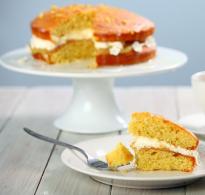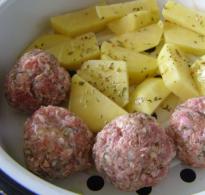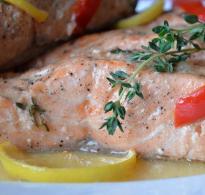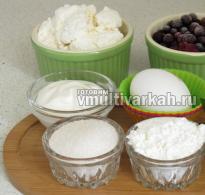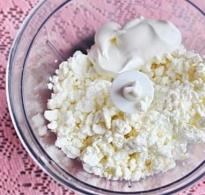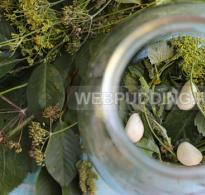Burnt jam: there is a solution to the problem! It is possible to wash burnt jam or sugar from metal utensils.
Hardened sugar is able to form a viscous, hard-to-remove crust. To prevent this from happening, it is better to familiarize yourself in advance with methods for removing traces of caked jam or syrup using improvised means.
Kitchen utensils can be made from a variety of materials. Depending on the type of material, a method is selected to eliminate burnt food residues.
Teflon pan

Teflon-coated pans are easy to clean because they are made with elements that prevent food particles from forming.
It is enough to fill the dishes with water with a small solution of liquid detergent, soak for half an hour, and then rinse.
It is important to remember that the Teflon coating can deteriorate from the action of alkaline agents, so natural remedies are suitable in this case: an unpeeled onion, apple peel or lemon. The listed products must be boiled in soiled utensils, and then rinsed.
aluminum pan
Aluminum utensils rarely burn, but if trouble happens, the following substances will help: soda, citric acid, silicate glue, laundry soap.
It is better not to use abrasive powder detergents when deciding how to clean an aluminum pan from burnt jam.
In order to remove the remnants of jam with citric acid, you need to follow the instructions:
- Remove leftover food with a tablespoon. It is important not to scratch or scrape the delicate aluminum surface.
- Pour water into the pan just above the soot line. If the jam is burnt only to the bottom, it is necessary to pour no more than 2 centimeters of water.
- Put in a container one teaspoon of citric acid in a ratio of 1 liter of water.
- Cover and boil for 10 minutes.

Another way to clean aluminum utensils is to combine baking soda and silicate glue. For this you need:
- Fill the pot with water.
- Add a tablespoon of baking soda and a tablespoon of glue.
- Mix thoroughly.
- Boil for half an hour.
- Pour the mixture and scrub the bottom and sides with a stiff brush.
To clean the outer walls of the pan, you can boil it in a larger container.
For this you need:
- Rub the outside of the pan with laundry soap and add a few tablespoons of glue.
- For a liter of water, you need to take 20 grams of soap in relation to 10 grams of glue.
- Rinse dishes under running water.
Ceramic tableware
Pans with an environmentally friendly and rarely sticky ceramic coating are easy to clean from the sugary crust of jam.
To do this, you can use citric acid diluted with water. The dirty container should be boiled, and after the food soot softens and leaves, wipe it with a hard sponge.
A common and affordable cleaning method that does not harm the ceramic surface is salt. To do this, pour 5 tablespoons of salt on the dirty surface, evenly distributing it on the bottom of the utensils, and leave for a couple of hours.
enamel pot

Enamelware requires a delicate approach when deciding how to clean such utensils from burnt jam.
It is important not to use a hard steel wool, not to scratch the enamel layer, and not to cook in a pot with damaged enamel. In this case, the sugary essence will burn on the damaged area every time.
Enamel does not tolerate sudden changes in temperature, so you should not immediately fill it with cold water after the jam has burnt.
Enamelware can be cleaned using common household products:
- Activated carbon;
- baking soda;
- table vinegar;
- Activated carbon;
- abrasive powders;
- lemon acid;
- apple peel;
- salt.

An enamel pot is easy to clean with baking soda. To do this, pour half a glass of soda dissolved in enough water to cover the dirty surface. Then you need to boil the resulting mixture, which will loosen the sugary crust.
In a similar way, soda can be replaced with citric acid or salt and boil the container. The ratio of water and acid should be the same as when cleaning aluminum utensils, and salt is enough 5-6 tablespoons per liter of water.
The original natural way to remove sugar bark is apple peel. It contains an acid that, similarly to citric acid, breaks down sugar particles and fructose.
It is necessary to rub the places where the jam is burnt with apple peel and leave the utensils for 15 minutes, and then rinse. If there is no effect, it is recommended to boil the apple peels.
Any table vinegar is suitable for dissolving the burnt crust. It needs to be poured onto problem areas and left for a couple of hours.

Several tablets of activated charcoal should be crushed, and then sprinkled on the contaminated area and left for half an hour. Next, fill the container with cold water and leave for another half hour, and then rinse with a regular liquid detergent.
If dark spots remain on the surface of the snow-white pan, they can be removed by boiling with. It is important to thoroughly rinse the dishes afterwards.
Cast iron cookware
Cast iron utensils are best cleaned before they cool down. You can fill it with water with the addition of 4 teaspoons of salt.
Like stainless steel cookware, it does not require special care. Such utensils can be rubbed with a metal washcloth, use alkaline products, citric acid, vinegar, powder detergents.
Stainless steel cookware does not require special care. Such a pan can be rubbed with a metal washcloth, abrasive powders or salt can be used.
Professional detergents can also save you from burnt jam: Gala, Komet, Fairy, Forte Plus and others. It is recommended to use rubber gloves, since the chemical components that make up the products can damage the skin of the hands.
Homemade jam is a popular delicacy that any housewife can do. Cook yummy in metal utensils: pots or basins. Sometimes the jam burns, that is, the sugar syrup sticks to the bottom. Such pollution can confuse even an experienced housewife. Is it possible to clean traces of burnt jam or sugar from metal pans without damaging the coating?
How can you clean the burn from the bottom of a metal pan
The way to clean the pan from burnt jam, apple jam or caramel depends on the degree of contamination. Weak burns that have not had time to turn into a black crust can be removed by soaking in water with the addition of a mild detergent. But burnt sugar cannot be washed in this way. You can remove it using improvised means:
- citric acid;
- soda;
- vinegar;
- salt;
- Activated carbon.
Do not try to scrape off the black, burnt film of sugar from the bottom of the pan with forks and knives! You run the risk of ruining the dishes irrevocably!
Home helpers for cleaning dishes from burnt jam - gallery
Table vinegar helps to cope with sugar burns in enameled pots and stainless steel utensils  Citric acid quickly cleans aluminum and enameled dishes from weak burns.
Citric acid quickly cleans aluminum and enameled dishes from weak burns.  Baking soda removes sugar deposits in enamel pots and stainless steel cookware
Baking soda removes sugar deposits in enamel pots and stainless steel cookware  Salt quickly removes burnt jam or jam from any dish
Salt quickly removes burnt jam or jam from any dish  Activated charcoal is a good way to remove small sugar deposits.
Activated charcoal is a good way to remove small sugar deposits.
And there are also industrial products designed specifically to deal with severe burns. For example, sprays for cleaning ovens and stoves. They contain alkali, which quickly removes any dirt. With this tool, you can clean stainless or enamel pans if your jam has run away or is badly burnt.
Read the instructions carefully and follow the safety precautions when working with such tools:
- if the composition contains alkali, wear protective gloves;
- work with a spray in a protective mask so as not to damage the respiratory tract;
- Wash treated dishes thoroughly after use.
Testing industrial cleaners from heavy carbon deposits - video
Before cleaning, make sure that the product is suitable for removing carbon deposits from dishes. Manufacturers write about this in the instructions.
Sprays do the job easily, but are hazardous to health, so be careful!
Quick ways to clean pans with different coatings
Metal pans are different:
- aluminum;
- enamelled;
- from stainless steel.
Depending on the metal from which the pan is made and its coating, housewives choose different methods of cleaning.
How to wash an aluminum pan from burnt jam
Of all the pans for making jam, aluminum is the least suitable. Under the influence of berry acid, the protective film on its surface is destroyed, and alloy particles harmful to health get into the finished dish. But if you have already undertaken to make jam in such a saucepan, then do not forget to put it in jars immediately after cooking to avoid an unpleasant metallic taste.
Best of all, citric acid removes sugar burn from the bottom of an aluminum pan. Cleaning process:
- fill the burnt bottom with a solution of citric acid at the rate of 1 tsp. for 1 liter of water. Its level should be about 2 cm above the bottom;
- put the pan on the stove and bring the solution to a boil;
- boil for 10 minutes;
- leave to cool.
After the solution has completely cooled, the black sugar film will fall behind itself.
Do not pour cold water over a hot burnt pot. Aluminum does not like temperature changes, the dishes can be deformed.
How to wipe the burnt bottom of enamelware
Enameled pans have a too thin bottom, so the risk of “missing” the jam and getting a burnt black crust is quite large.
The burnt pan must first be cooled, and then proceed to cleaning. If the soot is small, soda, salt, activated charcoal or vinegar can cope with it. The recipe using baking soda is the most popular among housewives.
- Pour half a glass of soda into the bottom of a dirty saucepan.
- Fill with water so that it covers the bottom by about 2 cm.
- Put the pan on the fire and boil for 10-15 minutes.
- Leave to cool. The black crust will fall behind itself after a while.
Soda can be replaced with salt. Add 5 tbsp. l. salt in 1 liter of water, pour over the burnt bottom and boil. Remove the remaining black film with a sponge and soap.
Nagar from enamel is well removed by 9% table vinegar. Procedure:
- pour table vinegar on pollution;
- leave for a few hours;
- remove the remaining dirt with a soft sponge and soap.
The effects of cooking caramel can be removed with activated charcoal.
- Crush activated charcoal tablets into powder.
- Pour the places of contamination and leave for half an hour.
- Pour everything with cold water and leave for another half hour.
- Wash the bottom with a sponge and soap.
If the burn has dried, do not try to scrub it off with a brush, as this will damage the enamel coating. In this case, a recipe of salt, soda and vinegar is useful.
- At the bottom of the burnt pan, pour 1 tbsp. l. salt and 1 tbsp. l. soda.
- Pour them with vinegar so that the burn is completely covered.
- Leave for 3 hours.
- Put the pan on the stove, bring to a boil, boil for 20 minutes.
- Leave for a day.
- After 24 hours, boil the solution for 15 minutes.
- Drain the mixture and the remaining burn.
- Remove the rest with a sponge and water.
We clean the enamel pan - video
Removing carbon deposits and burnt sugar from stainless steel dishes
Stainless steel pots are more suitable for making sweets. They have a thick bottom, which reduces the risk of burning. But if trouble still happened, a proven method will help you.
First aid
Of course, it is best to remove burnt jam immediately after cooking. If you postpone it for later, you will have to work hard with your hands, scraping out the remnants, and move on to radical cleaning methods.
What should be done immediately after discovering a problem? I found 2 different ways for myself.
Method 1. We take the largest saucepan in the house (so that the burnt one fits in it) and pour water into it, put it on fire. When the water warms up a little, add half a package of baking soda or technical soda there, as well as a small tube of silicate glue (yes, that's it). Do not try to add super glue or PVA, only the silicate version! Mix the resulting mass until smooth and boil. As a result, we should get something like a paste. We lower the burnt dish into the pan with the product and cook for about 20 minutes. Then we remove it and quickly put it under cool water, simultaneously removing the paste with a soft sponge. Voila, the miracle product pulled out all the burn and made the pan clean.
Method 2. Also very effective. Immediately after removing the burnt pan from the stove, put it under a stream of water and remove a thick layer of burnt (let black spots and traces of scale remain). Next, pour water into the pan and add 2 tablespoons of citric acid, put the product on fire. As the temperature rises, you will see how the remaining lumps move away from the bottom. It remains only to drain the lemon water and wipe the sponge with cleaning powder (you can use soda) and a soft sponge until a perfectly smooth surface.
We wash old stains
Sometimes the scale from cooking accumulates for years, or there is simply no time to immediately clean the pan after cooking. In this case, you will need slightly different cleansers.
- Activated carbon. To begin with, I heat the pan with the old burnt under running hot water. Next, I grind a package of tablets (10 pieces) to a powder state and distribute at the bottom, leave for 20 minutes. After that, I add hot water so as to cover the entire bottom, and leave for another half hour. At the end, I take an old sponge and easily remove the scale.
- Acids. This method was recommended by a friend. If you need to remove the remnants of an old burn and whiten the bottom, then you can use vinegar, citric acid or lemon juice. We apply acid to the bottom and leave for 10 minutes. After that, add a little water and put the pan on medium heat, cook until the bottom begins to lighten. To be honest, the tool is applicable only to a recent (not stubborn) burn, but it whitens the bottom well.
- Brine. Pour 6 tablespoons of rock salt into the pan and fill with water so that all black places are covered. Next, leave the solution for several hours or boil it over low heat for about half an hour. Recent pollution is well behind the walls, and old ones will have to be removed in a different way.
- Soda bowl. Mom and grandma clean homemade pots the only way. Take 6 tablespoons of baking soda and combine with hot water to the consistency of a liquid slurry. The tool will be distributed to the burnt areas and left to “sour” overnight. After that, the soot becomes soft and pliable, which allows you to remove it with a regular sponge and detergent.
- White. Frankly, a chemically unsafe and dubious method, but many claim that it works (I have not tried it myself). We take a tablespoon of whiteness, combine with cold water and pour into a burnt pan. After 24 hours, drain the product and boil an enameled pan with plain water 2 times (do not forget to drain the old water). Then we wash the dishes with ordinary detergent. White surface guaranteed!
- Milk serum. I learned about this method not so long ago and now I use it constantly. I just pour whey into a burnt pan so that the burn is completely covered, and leave it for a day. Then I drain the liquid and simply wash the pan with a sponge - natural lactic acid softened the burnt surface.
- Soap solution. If it doesn’t burn too much, then you can take ordinary laundry soap, grate it and dilute it with water. Boil the resulting product for 20 minutes, then cool the pan and simply rinse with a sponge.
- Sour apples. Visiting friends, I saw how my grandmother cleans the enamel with the help of green apples. He simply removes the peel from them, throws them into a burnt pot of water and boils for about 20 minutes. Not surprisingly, the acid in such apples is no less than that of a lemon! The same woman suggested that you can boil the rhubarb, but in fact I never tried it. Something tells me that you can boil lemon zest with the same success.
And finally, a few tips on the operation of enamel, to avoid burning the jam.
- A new pan needs to be tempered! I pour water into it, put it on fire and bring it to a boil. After boiling for 5 minutes, turn off the stove and leave hot water in the pan.
- Do not use abrasive sponges and powders unless absolutely necessary. You should not, out of habit, clean the bottom with soda or powder, an iron brush, etc. Pores and microcracks gradually form in the material, into which jam particles eventually get and burn.
- Enamel does not like temperature changes. It is forbidden to put an empty pan on a fire or hot surface. Also, do not pour hot dishes with cold water, even if you need to cool it quickly - the enamel will quickly crack.
By following these simple rules, you will not have to learn from your own experience how to clean an enamel pan from burnt jam.
Cleaning methods differ depending on the material of the dishes.
Summer has come, the bright sun is shining, the fragrant berry is ripening. During this period, housewives prepare jam for the winter. Sometimes there are so many things in the kitchen that no matter how carefully you follow, the delicacy manages to burn.
But there is a way out of this unpleasant situation. The only thing to keep in mind is that pans are made from different materials and each requires a different burnt-on residue cleaner.
enamel pot
Let's start with enamelware and find out how to clean it of burnt jam. This material requires delicacy: rubbing with a hard metal brush is strictly prohibited.
If the enamel on the pan is cracked or chipped, you should not cook in such a dish, the sugar syrup will burn constantly.
If you feel a characteristic smell, it means that a viscous crust has already formed at the bottom, do not rush to fill the container with cold water, as this material does not like sudden changes in temperature.
What to do? Although it is difficult to wash such a pan, you can use tools that are always at hand:
- citric acid;
- baking soda;
- table salt;
- activated carbon;
- table vinegar;
- peeling apples.
 For an enamel pot, use baking soda.
For an enamel pot, use baking soda. Baking soda is an industrial product that is great for cleaning enameled dishes. The procedure is simple:
- measure out 0.5 cups of soda;
- fill it with water;
- pour the resulting mixture into a container with a burnt bottom;
- boil.
The candied crust will become loose and easily come off.
Soda can be substituted citric acid(1 teaspoon per liter of water) or table salt (5-6 tablespoons). All manipulations are similar to those described above.
An unconventional cleaning method is using apple peel. The whole secret lies in the fact that they contain acid, the action of which is the same as that of citric acid. Rub kitchen utensils with apple peels and leave for 10-15 minutes, then rinse under warm water. If the burnt areas have not cleared, boil the peel.
To dissolve the viscous crust, table vinegar is suitable, just pour it into the pan and wait. After two hours, burnt spots can be rubbed off.
Activated charcoal is used as follows:
- crush five to seven tablets;
- cover the contaminated area with the resulting powder;
- leave for 30 minutes;
- pour cold water;
- after half an hour, rinse the container with the addition of dishwashing detergent.
Teflon pan
Teflon is a material that prevents carbon deposits, and if this happens, it is easy to clean. Fill the dishes with warm water, add a couple of drops of liquid detergent solution, leave to soak for 30 minutes, and then rinse. That's the whole operation.
Teflon is afraid of alkali, so use only natural products to care for it.:
- lemon juice;
- bulb;
- apple peels.
Aluminum cookware
Aluminum utensils burn extremely rarely, but this happens. To troubleshoot the problem will help:
- laundry soap;
- silicate glue;
- baking soda;
- lemon acid.
A mixture of soda and silicate glue will help get rid of the remnants of jam. The procedure for using this tool is as follows:
- pour a glass of water on the burnt bottom of the pan;
- add a tablespoon of soda and glue;
- mix;
- boil;
- pour the solution out of the container;
- scuff the walls with a metal brush;
- rinse.
If the sweet mass ran out over the edges of the container, it is necessary to boil it in a larger container, adding glue (10 grams). Pre-rub the outer walls of the pan with laundry soap (20 grams). All these proportions are calculated per liter of water.
Cast iron saucepan
 Cast iron is the most unpretentious material
Cast iron is the most unpretentious material Unlike enamel cookware, cast iron must be cleaned while it is hot.
One way is to pour a highly saline solution of water. For cleaning, you can use the following tools:
- alkali;
- vinegar;
- washing powders.
You can safely rub with a hard washcloth, this material will endure everything.
Use professional cleaners that are also safe for cast iron utensils:
- Forte plus;
- Fae;
- Comet.
These products can only be used with rubber gloves.
The perfect cookware for sweet treats
The first and main parameter: the capacity should be wide and low. What does this remind you of? That's right, a simple and necessary basin in everyday life. Evaporation of water in such dishes occurs faster, which is why it is considered ideal.
With the form it is clear, but what should be the material?
Basins made of brass, copper or stainless steel are best suited.
You can also cook in enamelware. Although it is usually preferred if the treat needs to be stored:
- until the next brew;
- before filling into jars.
There should not be a single crack on enameled utensils. Otherwise, the quality of the cooked product will decrease.
Eliminate burning smell
You can save a sweet treat from an unpleasant smell, but only if it is slightly burnt. Act quickly and carry out the following manipulations:
- remove the pan from the hot burner;
- quickly scoop out the jam into a clean container;
- do not scrape the viscous mass at the bottom, donate it;
- prepare cleaning agents depending on the type of material;
- open the window to ventilate the kitchen;
- add the salvaged part.
If the smell could not be removed, you can add:
- cinnamon;
- Vanillin;
- Citrus.
Try to correct the situation, and if it does not work out, continue to be careful and do not move away from the pan during the cooking process.
Even a good housewife sometimes burns food. Stains remain on the pan, which spoil its appearance and make it unsuitable for further use.
Enamel-coated pots are a little more difficult to clean than other materials. Its coating is more sensitive. In this regard, not all substances can be used for cleaning. However, folk wisdom knows several proven ways in the fight for the purity of enameled pans.
Cleaning the outside of the pot
To clean the pan from soot from the outside will help the usual baking soda. To do this, apply the powder on wet walls for 15 minutes, then gently wipe the dishes with a damp cloth. The use of brushes with hard bristles in this case is prohibited, they can damage the enamel coating.
Fine sand may also be suitable for cleaning. It should be applied to a damp sponge and wipe the pan with gentle movements. In the same way, laundry detergent can be used to remove carbon deposits.
An effective contaminant remover is silicate glue. To use it, one tube must be diluted in a basin of hot water. It is necessary to place a saucepan in the resulting composition and put the bowl on a slow fire for several hours.
To clean the bottom from the outside, the pan must be placed in a container that is several times larger in size. Next, pour a solution of soda (1 pack of powder per 4 liters). The container must be boiled over an open fire for one and a half hours. After the water has cooled, the pan should be wiped with a damp cloth.
Ways to deal with burnt milk
Stains from burnt milk on the pan are considered difficult to remove. You can get rid of them in the following ways.
 I sleep to coffee grounds> it is necessary to apply a thick layer on the burnt areas and rub a little with a sponge. The composition should be left for an hour, then washed off with warm water.
I sleep to coffee grounds> it is necessary to apply a thick layer on the burnt areas and rub a little with a sponge. The composition should be left for an hour, then washed off with warm water.
The most effective remedy in the fight against burnt milk is Activated carbon. Several tablets must be crushed to a powder state. The resulting composition should fill the bottom of the pan and leave for 40 minutes. Next, you need to pour cold water into the container and let it brew for half an hour. After such treatment, contamination can be easily removed with any detergent.
Salt It also removes various contaminants well. The agent must be applied in a thick layer on the walls and bottom of the pan and left for several hours. Next, the salt should be washed off with warm water.
Vinegar in the fight for cleanliness
In the fight against soot, vinegar is very effective. It can be used in several ways. For the first pan, you need to pour vinegar and let stand for 2 hours. After such treatment, contamination will be easily removed with a regular sponge. In the absence of vinegar, it can be replaced with other oxidizers: lemon juice or citric acid.
For the second method, water and vinegar must be poured into the pan in equal parts. The container should be put on medium heat for 20 minutes. After this procedure, the stains will be removed with ease. When using this method, you must comply with precautions. Vinegar fumes are hazardous to health. When cleaning the pan, you should not be in the kitchen; the windows in the room must be open.
How to clean the inside of a pot?
 There are many popular ways to clean a burnt pan.
There are many popular ways to clean a burnt pan.
Pour water into the pan and add equal parts (100g each) of liquid soap and any cleaning agent, for example, dishwashing gel. The container must be placed on an open fire and boil 20 minutes. After the pan has cooled, wipe it with a damp cloth.
The acid helps to break down the soot. In this regard, many housewives recommend boiling in a saucepan for several hours. peel of sour apples.
Many carbonated drinks, such as Coca-Cola, Sprite, contain carbonic acid. This element actively destroys pollution. To remove burnt residues, the drink must be poured into a saucepan and put the container on fire for 30 minutes. After treatment, the damaged areas should be wiped with a wet cloth.
In the fight against burnt residues, you can use not only ordinary soda, but also its washing counterpart.
For this 25 gr. powder should be poured with a liter of hot water. The product should be poured into a container and allowed to stand for 30-40 minutes. Can be used instead of soda 25% solution sulfuric or hydrochloric acid. However, in this case, it is necessary to observe the precautionary rules and avoid contact with the elements with open hands. Better to use rubber gloves. Also, after processing, the pan must be thoroughly rinsed several times.
Boiling the pot with rock salt. To do this, salt (3-4 tablespoons) should be placed in a half-filled dish and put on the stove for 15-20 minutes. After boiling, the pan should be wiped with a wet cloth.
For the next method, you need to pour cold water into the dishes and add 1 tbsp. whiteness. The composition should be left for a day. Next, the liquid must be poured out and the pan boiled several times with ordinary clean water. After this treatment, the dishes must be thoroughly rinsed.
 If jam is burnt in the pan not worth it immediately put it under water. The dishes must be allowed to cool completely. Further, to get rid of burnt sugar, you can use the following methods.
If jam is burnt in the pan not worth it immediately put it under water. The dishes must be allowed to cool completely. Further, to get rid of burnt sugar, you can use the following methods.
For the first method, the container should be filled with water and baking soda should be added (at the rate of 4 tablespoons per liter). The pan must be put on an open fire for 15-20 minutes. After this treatment, stains can be easily removed with a damp cloth.
Regular apples are rich in acid, which is effective against burnt sugar. To remove the remnants of jam in a saucepan, it is necessary to fill it halfway with apple peel, pour water and boil on an open window for 20 minutes. After the procedure, plaque should be removed with a damp cloth.

